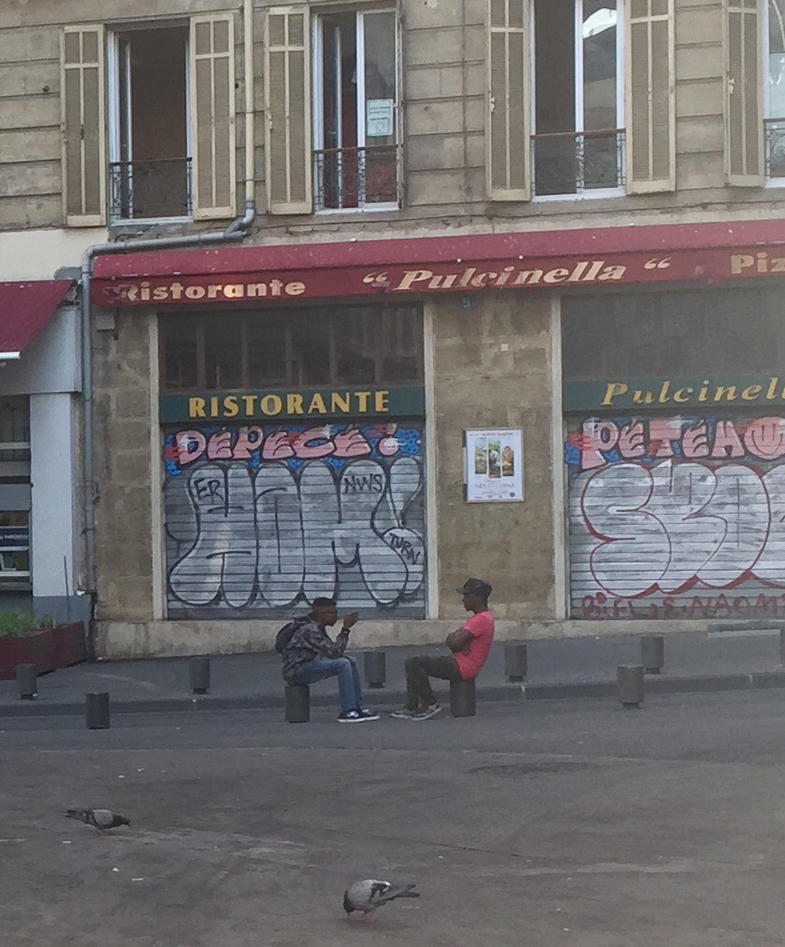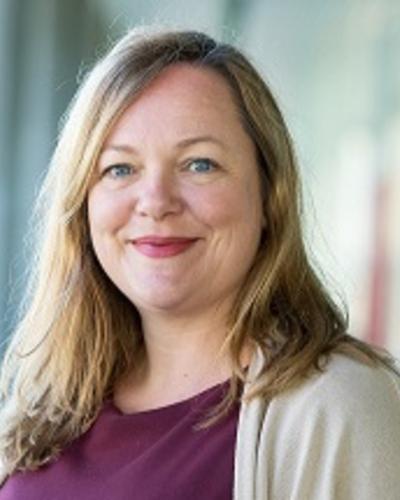Venting ved Europas grenser
Her kan du få innblikk i det første feltarbeidet til sosialantropolog og prosjektleder Christine M. Jacobsen i forbindelse med WAIT-prosjektet.

Hovedinnhold
Hun har tilbragt sommermånedene i Marseille blant irregulære migranter.
I dette innlegget fra feltarbeidet diskuterer hun de tidsmessige dimensjonene omkring grensesikkerheten mellom Frankrike og Italia.
‘French police hit us!’ Leo, a 17-year old Sudanese in the food line at Caritas in Vintimiglia utters his complaint in broken English, mimicking a punch in the face with a closed fist. The boy next to him points to his bandaged toe sticking out of a pair of flip flops, and explains that the police were chasing them when they tried to cross the border yesterday. The expression ‘to cross the border’ does not really capture the experience of these young Sudanese migrants, though. Rather than a literal, geographical border, borders are proliferating; they are dispersed a little everywhere wherever the movement of people is happening and is controlled.
Securitization of the French-Italian border
During my fieldwork in Marseille for the WAIT project this summer, most of the migrants I met had arrived via the so-called Mediterranean route, starting off in Nigeria, Gambia or Sudan, traversing the desert into Libya, crossing the ocean to Italy, and then continuing by train and sometimes by foot from Italy to France – a journey full of detours, stops and waiting. The town of Ventimiglia at the foot of the stunningly beautiful Roya valley, which weaves through Italy and France as it narrows northwards, is the main entry point to France.
During my previous fieldwork in Marseille in the aftermath of the Arab Spring, the French reintroduction of border control at Ventimiglia left crowds of paperless migrants lingering at the French-Italian border. Over the last couple of years, with the so-called European migration crisis, the border in the Roya valley has become increasingly securitized. As a volunteer at the Doctors of the World puts it; the valley is under siege.
17-year old Momo from Sudan has tried to enter three times in the 20 days since he arrived in Ventimiglia. One time by train, another time walking on the trafficked road, and the last time following the mountain trail. As police controls have tightened, the crossing has become more hazardous, with some recent border deaths, and the offer from the ‘passers’ more frequent and expensive. Waiting for a new opportunity, Momo is sleeping under one of the bridges where provisional camps are dispersed along the riverbed.
A short drive up the Roya valley we cross the border into France again, to meet another group of Sudanese who are ‘waiting it out’ at the improvised camp of Cédric Herrou. Herrou has become (in)famous for his defiance of French border policing, and his insistence to uphold the right to demand asylum in France for those arriving across the border. His small chicken farm, situated a few kilometres from the French-Italian border, has become a safe haven for migrants waiting to cross. The idea of crossing is paradoxical here at Herrou’s farm, given that it is geographically located in France. However, with reference to a special provision in the French penal code and the current security situation, the border police systematically returns migrants to Italy from the Roya valley.
At the end of my fieldtrip to Ventimiglia, I pass the heavily guarded border at the edge of Menton, a small French town that used to belong to Monaco, and before that to Italy. At the French border, where Leo and his friends were chased yesterday, the border guards politely greet me: Bonjour Madame. No need for identity papers or whatever document when you are a white woman in your forties. The police have learned to recognise the ‘irregular migrant’ as young, black and male. While the securitisation of the border differentiates between bodies, it does not only affect migrants. Black inhabitants and tourists are increasingly stopped and asked for their papers, and inhabitants who drive across the border on a daily basis for work are stopped and their trunks checked for migrants.
Expanding borders and the multiplication of waiting
While the process of externalization of borders receives much critical attention these days (as for instance Macron’s suggestion to create so-called hot spots in Libya), the parallelle process of internalization of borders receives less attention. And yet, this is precisely what is at stake when Hamid, one of the Soudanese in Herrou’s camp tells me that “If they catch you in Nice they return you immediately, if they catch you in Cannes they still return you to Italy, if you manage to get to Marseille however, you made it.” The expansion of the border inwards, with multiplying checkpoints and controls at train stations along the Côte d’Azur, thus seems to have pushed the French-Italian border all the way to Marseille.
The many migrants I meet in Marseille who have finally managed ‘to cross’, attest to the fact that the function of border control is less to stop migration and more to ‘pause’ or slow down migrant trajectories. Put temporarily on hold in their journeys by bordering practices, the places where migrants wait are multiplying. In Marseille migrants wait at the train station to move on towards Paris and eventually Germany or the UK. They wait at the Platform d’Asile to register their wish to apply for asylum. They wait at the Préfecture to hand in their application for a resident permit. They sleep on the street while they wait for a place in a reception centre. And then they simply ‘wait it out’ in the city; in all those spaces that allow some rest and protection, often in company with migrants from their own group.
In some cases, waiting comes to an end and marks a new beginning. Ibrahim walked from Vintigmilla to Nice one night about two years ago, after having been returned to Italy earlier the same day. He got on a train to Marseille, so tired that he ended up at the emergency ward for his body to recover its functions. After waiting for two years, and hiring a lawyer to repeal his first negative, Ibrahim has been officially recognised by the state as a refugee. Next week he starts training to become a chef. Finally, he is no longer waiting at the borders of Europe.


